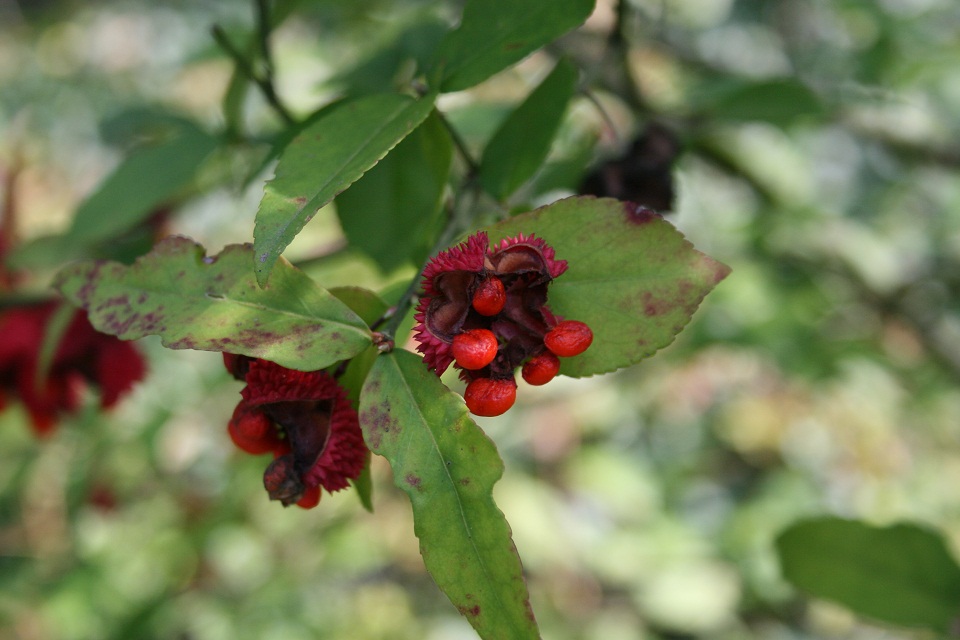
Submitted by Jeran Guffey and Andy Pulte
Many plants in our gardens remain unnoticed most of the year. They seem to sit helplessly as green blobs in the landscape; however, when it’s their time to shine they really pull out all the stops. Such is the case with Euonymus americanus, commonly known in some parts of the country as strawberry bush. In this part of the world, this euonymus is also known by the more down-home name “Hearts-a-Bustin.” It’s so named for the plant’s unique four-lobed seed capsules, which open in September and early October to reveal a fiery-red collection of dangling seeds from its interior. These seeds can persist late into the year and add splashes of red to the late-season landscape.
Strawberry bush is a sprawling, multi-stemmed shrub that grows from 4 feet to 6 feet high. As the plant matures, it becomes more erect and stems become thicker and more heavily branched. It has a lazy appearance and would be best left to its own imperfections in a woodland or naturalized garden. Native to the eastern United States, strawberry bush grows from zones 6 to 9 and prefers slightly acidic, shady sites. If it is planted in a sunnier spot, make sure it is mulched and watered well. This plant can also handle somewhat drier, understory shady situations. Flowers appear in spring and are greenish-white and fairly inconspicuous.
Deer have been known to graze on this plant and seem to love the tender leaves and stems. Humans should take the red color of the seeds as a warning; they are known to be a strong laxative and cause severe diarrhea. In fact, this genus of plants in general is considered poisonous to humans.
Strawberry bush is prone to euonymus scale and crown gall. However, these problems are minor when compared with the susceptibility of other landscape euonymus like burning bush (E. alatus) or wintercreeper euonymus (E. fortunei). With proper placement and care, Euonymus americanus is sure to add seasonal interest to the woodland garden as the days grow shorter and the year winds down.
Both of the authors are associated with the University of Tennessee Institute of Agriculture. Jeran Guffey is ajunior from Knoxville, Tenn., studying landscape design, and Andy Pulte is a faculty member in the Department of Plant Sciences as well as an internationally certified arborist. The UT Gardens are located in Knoxville and Jackson and are a program of the UT Institute of Agriculture. Their mission is to foster appreciation, education and stewardship of plants through garden displays, collections, educational programs and research trials. The gardens are open during all seasons and free to the public.
See http://utgardens.tennessee.edu/ for more information.
Contacts:
Andy Pulte, UT Department of Plant Sciences, 865-974-7324
Patricia McDaniels, UTIA Marketing and Communications Services, 615-835-4570